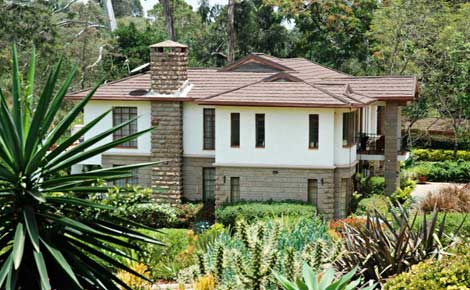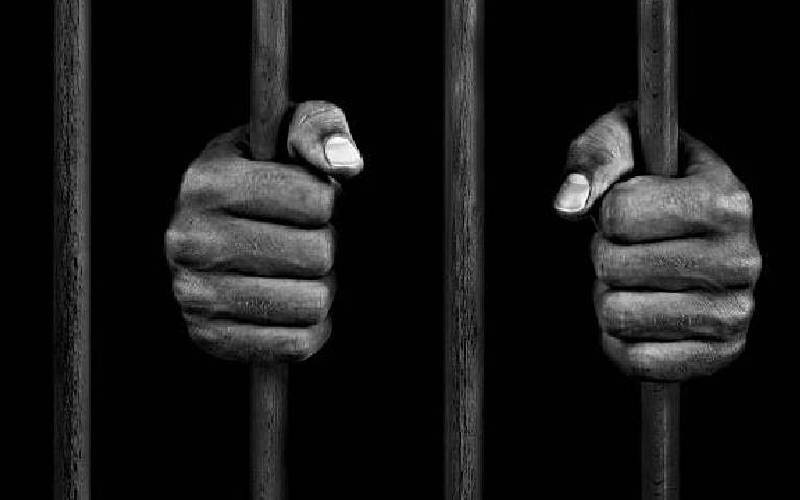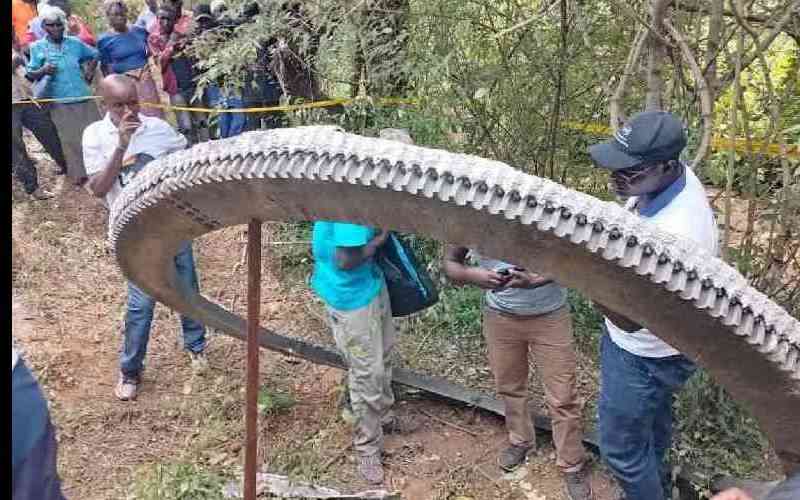“I had a farm in Africa, at the foot of the Ngong Hills,” so says Karen Blixen in her book Out Of Africa, a colonial memoir. It is here that the story of Karen begins.
When in 1931 a developer by the name Remy Martin bought the land owned by Karen Blixen, the Danish author, and converted it into residential lots, he had no idea that he had just initiated what in modern day would be one of Nairobi’s fastest growing suburbs.
More than 80 years later, Karen, which was named in honour of Ms Blixen, is now an affluent suburb sprawling with executive gated communities, ranches belonging to some key individuals in the country, high-end shopping malls and even a powerful association that manages the town’s infrastructure.
Karen lays South-West of Nairobi City centre and is thought to begin at the intersection of Ngong Road and Ngong Forest Road.
It is bordered to the South-East by Lang’ata, another affluent suburb, to the West by Ngong that hosts the Ngong Forest and to the North by Dagoretti.
In the early days, Karen was a simple town with the chief residents being British nationals living in bungalows without any fancy design but still modern. But one of the factors that has contributed to the immense growth of Karen today is the dynamism in its demographics which as of 2010 was a constitution of large numbers of American, German, Japanese, and Scandinavian expatriates and their families and also white Kenyans of European ancestry.
Modern day Karen is not even what it was five years back; now laden with its own fully functional infrastructure.
This includes roads, high-end shopping malls and business parks, international and local private schools, high-end residential developments and the notable presence of some key individuals in the country.
Deputy President
The Sh400million Deputy President’s official residence is located on ten-acres along Karen Road while former Prime Minister Raila Odinga and former Attorney General Amos Wako are some of the key people who also have residences in Karen.
So what are some of these hotspots that have transformed the face of Karen?
A few years before the infrastructure boom of Kenya started, the Government said that many of Nairobi’s roads were getting choked with traffic due to poor road design.
Most of these vehicles were simply looking for a shorter route in or out of the city.
This prompted a road network that would link Nairobi from all corners in such a way that one would not necessarily have enter the city centre.
To solve this, the Nairobi Bypass Project was conceived.
Stay informed. Subscribe to our newsletter
The Sh41.3 billion road project would see the construction of three roads around the city to aid in easing the traffic snarl-up within Nairobi – one of these roads is the Southern Bypass.
Construction of this 30km road is more than halfway complete and has been erected as a dual carriageway from Mombasa Road where an interchange is constructed linking with Kabete – Limuru Road at Kikuyu Town.
Motorists will enter the bypass from the Nairobi-Mombasa highway near Park Side Towers and run on the edge of the Nairobi National Park, Langata South Estate, Ngong Road, Dagoretti, Gitara and Thogoto where it will then join the Nairobi - Nakuru highway.
This not only means decongestion of Ngong Road and Lang’ata Road, which are the main entrances into Karen from the city centre but, will also see more businesses and property developments sprouting in the larger Karen area as many previously ran away from this region due to the unbearable traffic.
Karen Hub
This will be the ultimate game changer for the new face of Karen – at least for the next few years.
Sitting on a 20-acre piece of land and at the heart of Karen Centre is this upcoming Sh4 billion shopping mall set to be the second biggest in Kenya, after Garden City along Thika Road.
The mall is a two-phase project with completion of Phase One estimated by September 2015.
This phase will comprise of shops, a supermarket, a restaurant, office spaces, wellness centre and medical facilities.
The second phase whose completion will stretch to 2018 will host residential units, a conference hall and a hotel.
According to Philippe Cauviere, director of The Karen Hub, this development promises a vibrant and unforgettable experience for visitors for all ages and gender.
It is everything one needs to work, shop, play and enjoy.
The employment opportunities this development promises are immense with 400 – 600 employees expected during the 2015 opening and it will at the same time catalyse growth in the larger Karen area.
For many years, Karen Crossroads and Karen Square have been the main shopping malls in Karen and are still a central point especially because of their location in the heart of Karen Centre.
However, we should expect a substantial degree of attention to now be diverted to The Hub especially for the big players in the market.
Business parks
The potential Karen carries has obviously not gone unnoticed to companies around the country and even from around the world who have a Kenyan interest.
Due to the increased residential developments to host these corporates, business parks are quickly coming up in Karen to host offices for the companies.
Some key notable ones include the Nairobi Business Park, an example of Grade A office space.
The other is the Watermark, a signature development in Karen, on 10.8 acres at the junction of Lang’ata Road and Ndege Road.
What accentuates this development is the LakeHouse, a spectacular island gazebo set on the water feature.
The split-level space is ideal for use for private lunches, meetings and business presentations.
Further enhancing convenience is an on-site cafeteria and a day-care facility.
heritage
Karen Country Club situated in the green residential district of Karen, twelve miles south of Nairobi, offers one of the finest golf courses in the country, as well as a host of other attractions.
Founded in 1937, the 18-hole golf and country club has over 4,000 members who reflect well the mix of nationalities in the area.
The Karen Blixen Museum is another attraction. Built in 1912 by the Swedish engineer Ake Sjögren, the bungalow-style house was bought by Karen Blixen and her then-husband.
While she separated from her husband in 1921, Blixen lived at the house and ran a large coffee plantation on the grounds until she returned to Denmark 1931.
The house was later donated by the Danish government in 1964 to the new Kenya government as an independence gift, which then opened to the public in 1986 as one of Kenya’s national museums and to date still remains a heritage in Karen.
Ngong Racecourse also represents the rich heritage in this area. This is the only thoroughbred racing venue in Kenya.
It is located along Ngong Road near the Lenana School and next to the Nairobi Business Park and operated by the Jockey Club of Kenya.
The racecourse was opened in 1954 with an average of 25 races annually of which the most prominent is the annual Kenya Derby.
The Ngong Racecourse remains a big source of pride in Karen.
 The Standard Group Plc is a
multi-media organization with investments in media platforms spanning newspaper
print operations, television, radio broadcasting, digital and online services. The
Standard Group is recognized as a leading multi-media house in Kenya with a key
influence in matters of national and international interest.
The Standard Group Plc is a
multi-media organization with investments in media platforms spanning newspaper
print operations, television, radio broadcasting, digital and online services. The
Standard Group is recognized as a leading multi-media house in Kenya with a key
influence in matters of national and international interest.
 The Standard Group Plc is a
multi-media organization with investments in media platforms spanning newspaper
print operations, television, radio broadcasting, digital and online services. The
Standard Group is recognized as a leading multi-media house in Kenya with a key
influence in matters of national and international interest.
The Standard Group Plc is a
multi-media organization with investments in media platforms spanning newspaper
print operations, television, radio broadcasting, digital and online services. The
Standard Group is recognized as a leading multi-media house in Kenya with a key
influence in matters of national and international interest.






